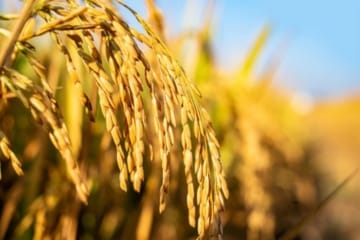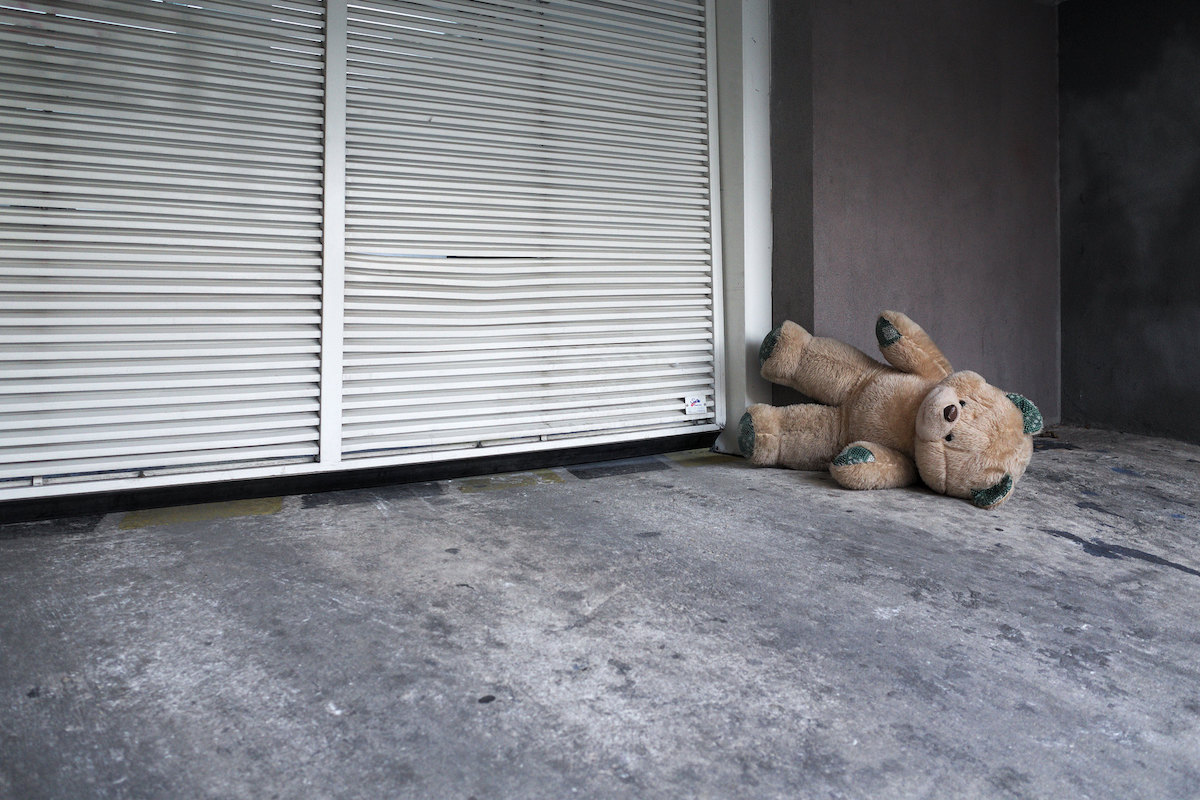Activism
GM Crops Like Golden Rice Will Save the Lives of Hundreds of Thousands of Children
The International Rice Research Institute developed numerous different Golden Rice strains back-crossed into commonly grown varieties, behind tough security barriers because of constant threats from activists encouraged by Greenpeace.

Any day now, the government of Bangladesh may become the first country to approve the growing of a variety of yellow rice by farmers known as Golden Rice. If so, this would be a momentous victory in a long and exhausting battle fought by scientists and humanitarians to tackle a huge human health problem—a group that’s faced a great deal of opposition by misguided critics of genetically modified foods.

Compare two plants. Golden Rice and Golden Promise barley are two varieties of crop. The barley was produced in the 1960s by bombarding seeds with gamma rays in a nuclear facility to scramble their genes at random with the aim of producing genetic mutations that might prove to be what geneticists used to call “hopeful monsters.” It is golden only in name, as a marketing gimmick, with sepia-tinged adverts helping to sell its appeal to organic growers and brewers. Despite the involvement of atomic radiation in its creation, it required no special regulatory approval or red tape before being released to be grown by farmers in Britain and elsewhere. It went almost straight from laboratory to field and proved popular and profitable.

Golden Rice, by contrast, was produced in the 1990s by carefully inserting just two naturally occurring genes known to be safe—from maize and from a common soil bacterium—into a rice plant, disturbing no other genes. It is quite literally golden: its yellow color indicates that it has beta carotene in it, the precursor of vitamin A. It was developed as a humanitarian, non-profit project in an attempt to prevent somewhere between 200,000 and 700,000 people, many of them children, dying prematurely every year in poor countries because of vitamin A deficiency. (Vitamin A deficiency causes children to go blind and lose immune function.) Yet the rice has been ferociously opposed by opponents of GM foods and, partly as a result, has been tied up in red tape for 20 years, preventing it from being grown. One study in 2008 calculated that in India alone 1.38 million person-years of healthy life had been lost for every year the crop has been delayed.
Golden Rice was the brainchild of two scientists, Ingo Potrykus and Peter Beyer, aimed at helping the 250 million children—predominantly in Asia—who subsist mainly on rice and suffer from vitamin A deficiency. Telling the parents of these children to grow vegetables (most don’t have land), or distributing vitamin capsules—the preferred alternative of some environmental activists—has not proved remotely practical.
Potrykus hit upon the idea of awakening the molecular machinery in the seed of a rice plant—it is active in the leaves—to make vitamin A while casting around for something he could do to help the world towards the end of his career. Within a few years, and with Beyer’s help, he had succeeded. With additional assistance from scientists at the agricultural company Syngenta, organized by Adrian Dubock, they eventually produced a version of Golden Rice that was sufficiently rich in beta carotene to supply all the vitamin A a person needs. (Dubock wrote about the development of Golden Rice here.) With some difficulty, they cleared the many intellectual property hurdles, getting firms to waive their patents so that the rice could be sold or given away. Potrykus and Beyer insisted that the technology be donated free to benefit children suffering from vitamin A deficiency and Syngenta gave up its right to commercialize the product even in rich countries.
Given the scale of human suffering Golden Rice could address, there may be no better example of a purely philanthropic project in the whole of human history. Yet some misguided environmental activists still oppose Golden Rice to this day.
Prominent among these is Greenpeace, the environmental lobby group which now has annual revenues of nearly $300m and a highly-paid chief executive overseeing a sophisticated fund-raising operation. Greenpeace lobbied to set very strict rules on the use of genetically-engineered crops which had the effect, whether intended or not, of making life difficult for Potrykus and Beyer. In January 2000, the same month that the development of Golden Rice was announced to the world in Science magazine, there was a meeting in Montreal of delegates from 170 countries working to come up with an international protocol on the regulation of biotechnology. This process had been started the year before in Cartagena, Colombia. Greenpeace was there, both protesting in the streets (“Life before profits!”) and working behind the scenes to draft rules for the delegates.
It was here in Montreal on 29th January 2000 that the “precautionary principle”—one of the lodestars of the environmental movement—was incorporated into an international treaty after days of intensive lobbying by Greenpeace. “We won almost all the points we were pushing for,” boasted a spokesman. The environmental group believed it to be a ‘victory’ that would save lives, but the effect was to hobble the development of Golden Rice for many years. As Potrykus said ruefully: “Once Greenpeace had fixed the regulations to be extremely precautionary, they didn’t have to do much more.”
Most people think the precautionary principle simply says “better safe than sorry” and helps to prevent disasters like the release of Thalidomide for pregnant women. In fact, it goes much further and is often a barrier to innovation. As applied in practice, especially in the European Union, it requires regulators to take into account all possible hazards of a new technology, however implausible, to discount all possible benefits, however plausible, and to ignore all the hazards of existing technologies that might be replaced by the innovation. As Ed Regis puts it in his new book Golden Rice: The Imperiled Birth of a GMO Superfood: “The principle focuses on theoretical or potential risks, those that are only possible or hypothetical, while ignoring the specific and actual harms that restrictions or prohibitions are likely to produce.” In this way, it creates obstacles to anything new.
Bizarrely, the Cartagena Protocol applied this principle to crops bred by the precise insertion of specific genes from other plants but not to the older technique of random genetic scrambling with gamma rays, like Golden Promise barley, even though the potential unknown risk of the latter is clearly greater. The effect on Golden Rice was twofold. First, the requirement for greater regulation tarnished all biotech crops as risky (if they’re safe, how come they have to go through so much regulation?). Second, it made the testing of different varieties impossibly expensive and time-consuming, killing a key part of the innovation process: the trial and error that is always necessary to turn a good idea into a practical product. Thomas Edison tried 6,000 different materials for the filament of a light bulb. Imagine if he had had to get separate regulatory approval for each one.
The European Union’s directive on the deliberate release of genetically modified crops includes the statement that “the precautionary principle has been taken into account in the drafting of this Directive and must be taken into account when implementing it.” This effectively killed off biotechnology on the continent, though Europe happily imports huge quantities of GM soybeans from the Americas today. Since 2005, Canada (which did not sign the Cartagena Protocol) has approved 70 different biotech crops, while the European Union has approved just one—and that took 13 years, by which time the crop was outdated.
To illustrate just how impenetrable the EU’s regulatory thicket is, take the biotech potato developed by the German company BASF in 2005. The European Food Safety Authority (EFSA) initially approved it, but the European Commission then blocked it, citing the precautionary principle. BASF took the Commission to the European Court of Justice, which ordered another evaluation from the EFSA. This confirmed that the crop was safe and the EU was instructed by the Court to approve its use, which it did. But Hungary’s government then intervened on behalf of green pressure groups, pointing out (Kafka-like) that the EU had based its approval on the first EFSA ruling instead of the second one, even though the two rulings were practically identical. In 2013, eight years after the first approval, the EU General Court upheld Hungary’s complaint. By then BASF had lost interest in banging its head against this precautionary wall, so it withdrew the application, packed up its entire research into biotechnology and moved it to the U.S., which has never signed the Cartagena Protocol. Syngenta did the same.

After a quarter of a century of growing biotech crops in North and South America, Asia and parts of Africa, the evidence is now clear: they have caused no human or animal illness, and have huge environmental benefit, such as greatly reduced pesticide use, less ploughing, lower greenhouse gas emissions, less land required to grow a given quantity of crop, lower costs and higher yields. This is the environmental bounty Europe has missed out on thanks to its over-zealous regulation of GM crops.
Greenpeace, having helped to create the red tape that held up Golden Rice, has campaigned against the crop more or less continuously for two decades. At first it argued that Golden Rice was useless because the very earliest prototype, which contained a daffodil gene, had too little beta carotene to be of any use. It then switched to arguing that a later version, with a maize gene, had too much beta carotene and could be toxic.
Despite these difficulties—including constant verbal attacks on themselves, and physical attacks on their field trials—Potrykus, Beyer, Dubock and their allies refused to give up. By 2012, it was clear from studies in China that the latest version of Golden Rice, grown in secure greenhouses, gave children sufficient beta carotene to make them healthy but could not harm them, and did so far more effectively than feeding them spinach. However, the research caused a fuss. The US-based, Chinese-born researcher followed precisely the approved protocols for the research, which did not describe Golden Rice as a GMO-crop. Nevertheless, the same university which had approved the protocols, then found that not describing Golden Rice as a GMO-crop was an ethical omission. Overall, and without any credible analysis, the university found insufficient evidence that the principle of ‘prior informed consent’ from the subjects of the research had been properly applied, handing the opponents of GM foods a huge propaganda victory at a crucial time. Yet by this date, billions of meals of biotech crops had been eaten all around the world, and three independent reviews of the Chinese research concluded that the trial had been safe and effective. Nevertheless, the reputational harm lingered.
The International Rice Research Institute developed numerous different Golden Rice strains back-crossed into commonly grown varieties, behind tough security barriers because of constant threats from activists encouraged by Greenpeace. Eventually, the Golden Rice Humanitarian Board chose one of the varieties for field testing. They would have liked to have chosen lots of different varieties, because in plant breeding it is always necessary to weed out sports that have for some reason acquired undesirable traits along the way. But the precautionary principle made this impossibly expensive and laborious since it required evaluation in advance of the potential risks of each separate variety. So they had to pick one.
Disastrously, that one variety turned out to have a genetic flaw that made it poor at yielding grain outside the greenhouse. Once again, the environmentalists crowed that the project was doomed.
But the anti-GMO activists didn’t always enjoy universal support within the broader environmentalist movement. One of the founders of Greenpeace, Patrick Moore, became so infuriated by the organization’s opposition to Golden Rice that he launched a campaign called Allow Golden Rice Now! on the very day that left-wing activists vandalized a Golden Rice field trial. Moore’s group went on to organize protests at Greenpeace’s offices in Hamburg, Amsterdam, Brussels, Rome and London. In 2015, the White House Office of Science and Technology Policy and the US Patents and Trademark Office rewarded Golden Rice with their Patents For Humanity Award. In 2017, a group of 134 Nobel-prize winners (now expanded to 150) called on Greenpeace and the United Nations Food and Agriculture Program to “cease and desist in its campaign against Golden Rice specifically, and crops and foods improved through biotechnology in general.” They concluded: “How many poor people in the world must die before we consider this a ‘crime against humanity’?”
In 2018, Mark Lynas, a prominent campaigner against biotechnology, switched sides and wrote a book in which he said: “We permanently stirred public hostility to GMO foods throughout pretty much the entire world, and—incredibly—held up the previously unstoppable march of a whole technology. There was only one problem with our stunningly successful worldwide campaign. It wasn’t true.”
By 2017, a new variety of Golden Rice, GR2E, had been tested in the field in the Philippines and shown to be robust, true-breeding, high-yielding and strong in its expression of beta carotene. The IRRI submitted an application to release it to farmers, in the form of eight hefty documents, one more than 800 pages long and detailing the many tests of the physical, nutritional, allergenic, and toxicity done on the plant to show that it could not conceivably be anything other than safe to grow and eat. Probably no crop has ever been so exhaustively evaluated. Thankfully, 2017 was the year the dam began to break. Australia, New Zealand, Canada and the US approved Golden Rice as a safe food, though none of them planned to grow it (vitamin A deficiency is rare in these countries). But this only stirred up more ferocious opposition among the usual anti-GMO suspects, who frantically lobbied the governments of India, Bangladesh and the Philippines not to approve the crop.
As Regis summarizes the sorry tale in his book:
The rice had to overcome numerous scientific challenges and extremely burdensome regulatory obstacles. It had to withstand years of constant abuse, opposition, factual distortions, disinformation, and ridicule by anti-GMO individuals and groups. It had to survive the destruction of field test specimens by cyclones, hurricanes, and paid vandals. It had to survive its one major scandal and one major mistake.
More than 13,000 supportive citizens (including Jeff Bezos) have now appealed to the governments of the world, the United Nations and Greenpeace to stop vilifying genetically-modified crops in general and Golden Rice in particular. Yet the United Nations remains in thrall to the opponents. Shockingly, UNICEF’s hefty recent report State of the World’s Children 2019: Children, food and nutrition does not even mention Golden Rice. The World Health Organization continues to ignore the product. In effect, a GMO superfood has been developed that could save the lives of hundreds of thousands of children every year, it’s been proved to be both safe and effective, and yet the world’s leading global health organization has decided to turn a blind eye.
The story of Golden Rice is deeply, deeply shocking. This is not a story of incompetence and ignorance, but of an antediluvian hostility to science and technology. In the end, though, the evidence in favor of Golden Rice proved absolutely overwhelming.






